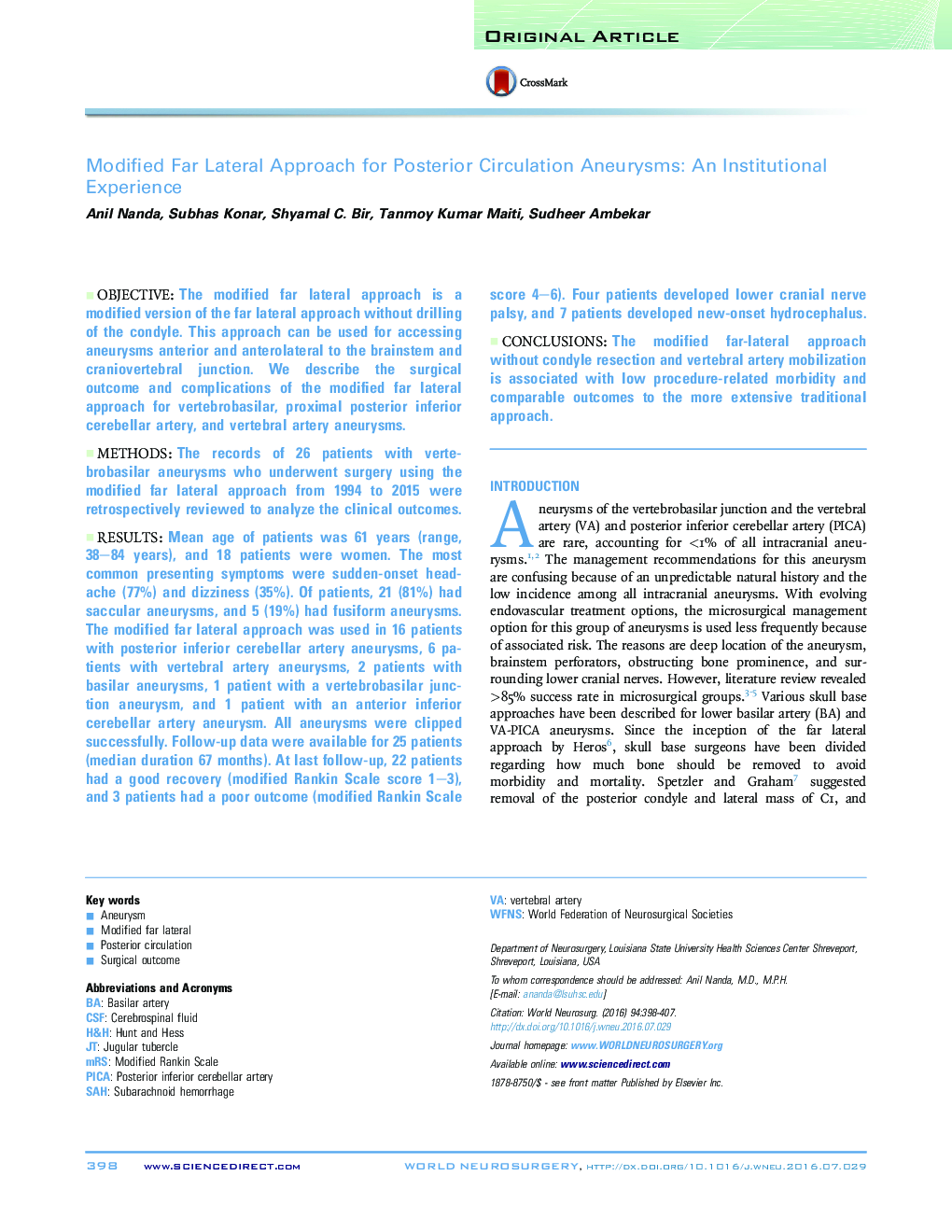| Article ID | Journal | Published Year | Pages | File Type |
|---|---|---|---|---|
| 3094626 | World Neurosurgery | 2016 | 10 Pages |
ObjectiveThe modified far lateral approach is a modified version of the far lateral approach without drilling of the condyle. This approach can be used for accessing aneurysms anterior and anterolateral to the brainstem and craniovertebral junction. We describe the surgical outcome and complications of the modified far lateral approach for vertebrobasilar, proximal posterior inferior cerebellar artery, and vertebral artery aneurysms.MethodsThe records of 26 patients with vertebrobasilar aneurysms who underwent surgery using the modified far lateral approach from 1994 to 2015 were retrospectively reviewed to analyze the clinical outcomes.ResultsMean age of patients was 61 years (range, 38–84 years), and 18 patients were women. The most common presenting symptoms were sudden-onset headache (77%) and dizziness (35%). Of patients, 21 (81%) had saccular aneurysms, and 5 (19%) had fusiform aneurysms. The modified far lateral approach was used in 16 patients with posterior inferior cerebellar artery aneurysms, 6 patients with vertebral artery aneurysms, 2 patients with basilar aneurysms, 1 patient with a vertebrobasilar junction aneurysm, and 1 patient with an anterior inferior cerebellar artery aneurysm. All aneurysms were clipped successfully. Follow-up data were available for 25 patients (median duration 67 months). At last follow-up, 22 patients had a good recovery (modified Rankin Scale score 1–3), and 3 patients had a poor outcome (modified Rankin Scale score 4–6). Four patients developed lower cranial nerve palsy, and 7 patients developed new-onset hydrocephalus.ConclusionsThe modified far-lateral approach without condyle resection and vertebral artery mobilization is associated with low procedure-related morbidity and comparable outcomes to the more extensive traditional approach.
